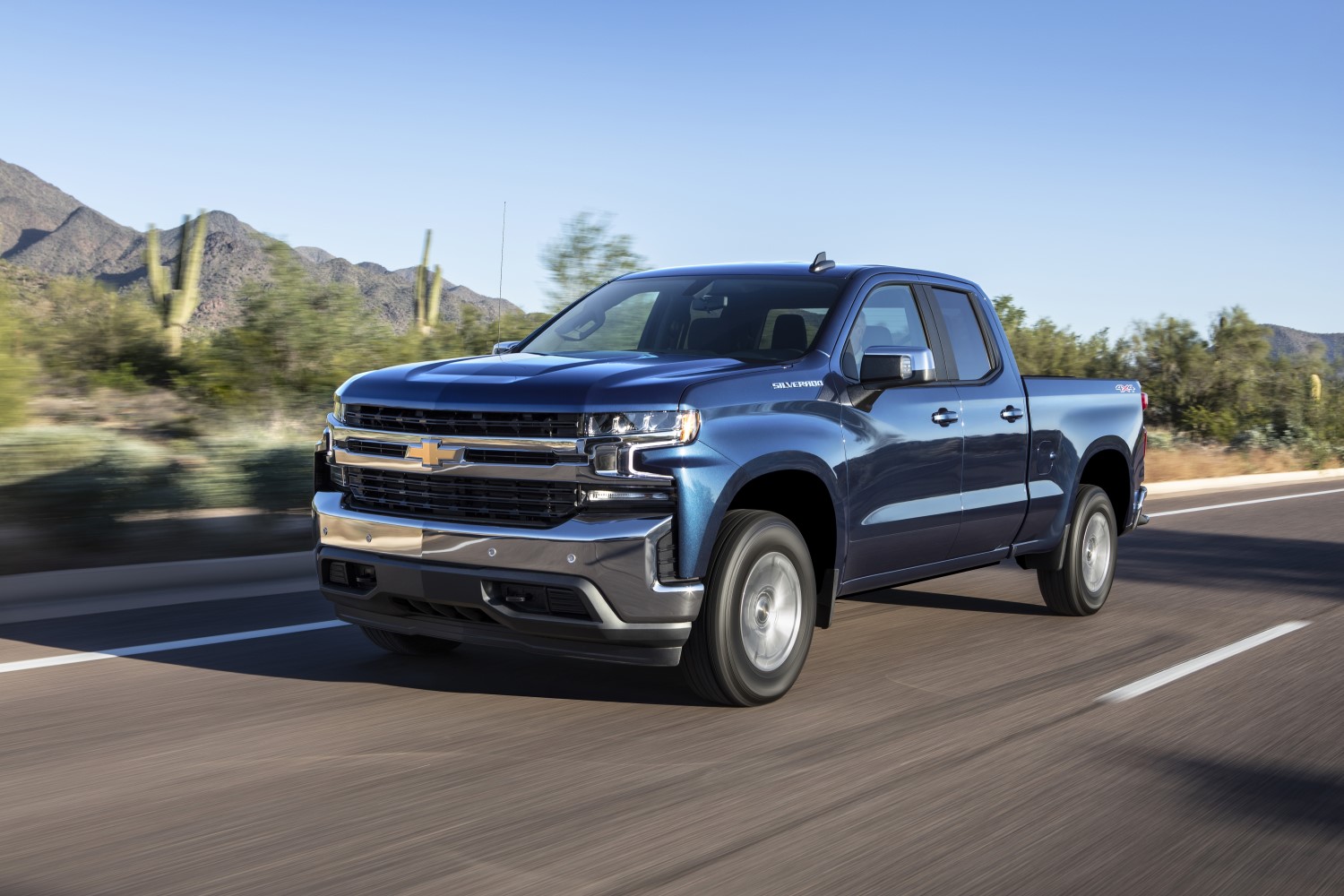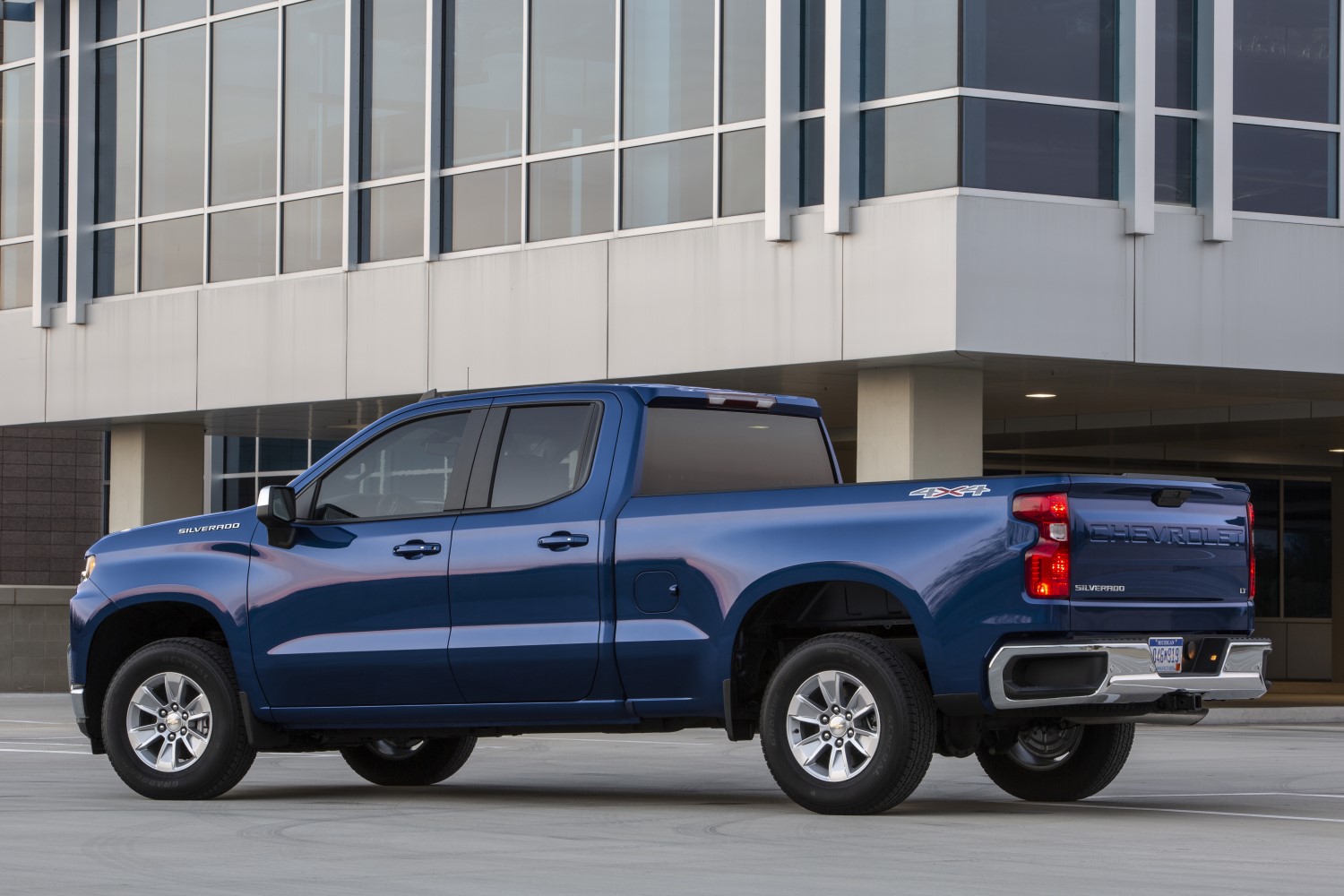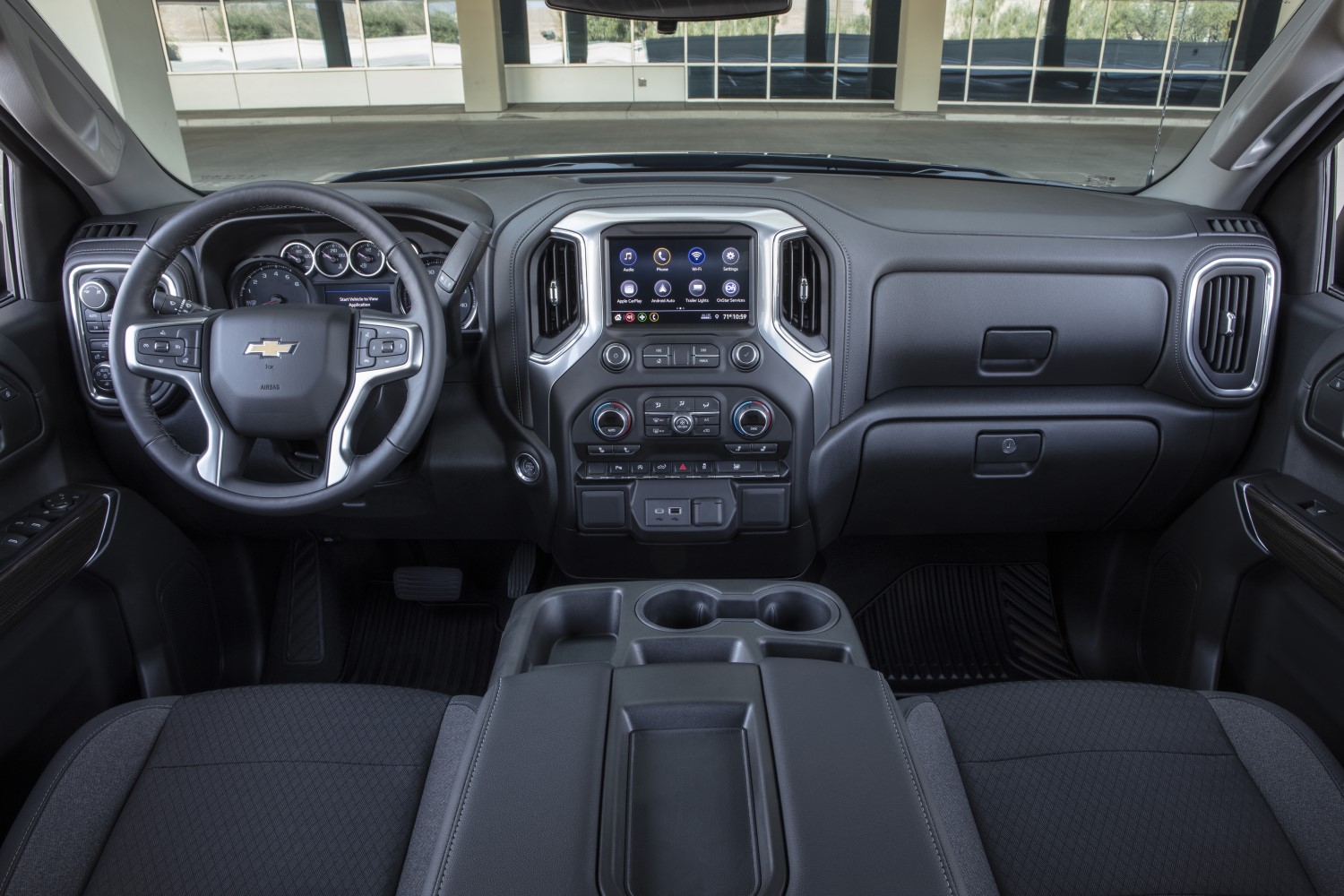We drive the Chevrolet Silverado 2.7 turbo
 |
| Chevrolet Silverado 2.7 turbo |
The truck market provides huge profits and consequently there is tough competition to get you to select each brand. Chevrolet thinks that the new Silverado is the best. While we can’t make that decision after driving one example of the Silverado without driving the competition, we can tell you that the Silverado is one sweet truck. Our model was the LT trim level with the new 2.7 liter four cylinder. Yes, they now offer a four cylinder in a full size truck. We had to see this for ourselves and decided to use the truck and see what we learn.
Our truck was the double cab LT trim which was perfect. The back seat is large enough to seat three people but the overall length of the truck still remains manageable in city traffic. The 4 cylinder engine is actually the standard engine in the LT. There are a host of other engines available from a 285 hp V6 to a 420 hp V8. There is also a turbo diesel option if you prefer a diesel.
As with almost every new car, the new Silverado is larger than the outgoing model in virtually every dimension. For example, the Silverado crew cab, short box has 1.2 inches more total width, 1.5 inches more total height, 1.7 inches more total length and 3.9 inches more wheelbase.
[adinserter name="GOOGLE AD"]As a result, the Silverado offers an additional 3 inches of cab length for all configurations, and up to 4 cubic feet more interior volume. It also offers the largest cargo volume of any full-size truck in short-bed, standard-bed and long-bed models. In fact, at 62.9 cubic feet, the Silverado short bed offers more cargo volume than the standard bed of the Ford F-150.
Despite the larger footprint, the Silverado is up to 450 pounds lighter than the outgoing truck (crew cab, short-bed models), due to advanced manufacturing and the use of mixed materials. The weight savings and the light weight four cylinder help give the Silverado a lighter feel that is very welcome in today’s full size truck market.
The truck race is about increasing capacities and the Silverado does not disappoint. The V6 model now offers up to 8,000 pound towing, an increase of 400 pounds. The 5.3 liter V8 raises that to 11,600 pounds. The 6.2 liter V8 with its 420 hp is the top engine for towing and maxes out at 12,200 pounds. The four cylinder can tow up to 7,200 pounds, which is plenty for the average person.
Standard on LT and RST trims, the new engine delivers 310 horsepower and 348 lb-ft of torque, for 22 percent more torque than the 4.3L V-6 it replaces. Developed specifically for truck applications, the new 2.7L turbo inline four-cylinder engine delivers peak torque from 1,500 to 4,000 rpm resulting in a truck that can do 0-60 in under seven seconds.
 |
| Side View |
The cornerstone of the 2.7L turbo is some new high tech features such as Chevrolet’s first use of cylinder deactivation on a four-cylinder engine, high and low lift cam profiles, and continuously variable valve timing. The engine also uses a new turbocharger housing for improved throttle response and low-speed torque, and an integrated exhaust manifold that is part of the cylinder head assembly and recovers exhaust heat for faster engine and transmission warmup, with quicker turbo response. An electric water pump that eliminates the drag of a conventional, engine-driven pump to enhance efficiency is also part of the package. It also enables continual cabin heating even when the engine is disabled by the stop/start feature.
The new engine represents a clean-sheet design for Chevrolet and was developed from the outset as a truck engine. To help generate the strong low-end torque customers expect in a truck, it was designed with a long piston stroke of 102 mm. The long stroke enables improved combustion and thus a higher compression ratio. Typically, a long stroke can increase the load of the pistons against the cylinder walls, generating more friction. That’s alleviated in the engine with an offset crankshaft. It is slightly off-center of the cylinders, allowing a more upright position for the connecting rods during their movement.
To support the high cylinder pressures that come with turbocharging, the crankshaft and connecting rods are made of forged steel and the pistons are made of a tough aluminum alloy with a cast iron ring groove insert. The system’s electro-mechanical variable camshaft effectively allows the engine to operate with three different camshaft profiles, complementing the variable valve timing system to deliver optimized operating modes for different engine speeds and loads:
- High valve lift for full power.
- Low valve lift for balance of power and efficiency.
- Active Fuel Management shuts down two of the cylinders in light load conditions to further conserve fuel.
“It’s like having different engines for low- and high-rpm performance," said Tom Sutter, Chief Engineer for the 2.7 liter engine. “The camshaft profile and valve timing is completely different at low and high speeds, for excellent performance across the board."
The engine employs an advanced dual-volute turbocharger that elevates the performance and efficiency advantages of a conventional turbo, with quicker response and enhanced low-rpm torque production. Rather than a single spiral chamber (volute) feeding exhaust gas from the exhaust manifold to drive the turbine on the turbocharger, the dual volute design has a pair of separate chambers with two exhaust gas inlets and two nozzles to drive the turbine. The design allows the exhaust pulses of the engine to be leveraged for faster spool-up and subsequent boost production, particularly at low rpm, where the effect significantly enhances torque output and drivability.
With the charge-air cooler, the pressurized, heated air generated by the turbocharger is pumped through a heat exchanger before it enters the engine. That lowers the air charge temperature by about 130 degrees F (74 C), packing the combustion chambers with cooler, denser air that enhances power production. The system achieves more than 80 percent cooling efficiency with less than 2 psi flow restriction at peak power, contributing to the engine’s available torque production at low rpm.
The end result is an engine that still has a bit of turbo lag unfortunately. Step on the gas from a stop sign and the result is not much power for about half of a second. The turbo quickly spools up though and you can even hear the turbo whine. Once you have boost, the four cylinder is very powerful and this truck will blow away your old big block V8. In everyday use, the lag is barely felt and most people will never notice it.
The only negative we can report on the 2.7 is that the sound coming from under the hood at high revs is not very pleasing. On the plus side though, there are lots of benefits to have a four cylinder in the huge engine bay of a truck. The engine is tucked behind the front axle and offers better weight distribution and lots of room under the hood make repairs much easier.
With the four cylinder engine, you would expect terrific fuel economy and that really depends on what you are planning to do with it. Our four cylinder truck was rated by the EPA at 19 mpg in the city and 22 mpg on the highway. The big 6.2 liter V8 with 420 hp is rated at 15 mpg in the city and 20 mpg on the highway. Just 2 mpg difference on the highway does not seem like a lot but 4 mpg in the city is a big deal. In our experience, we were able to beat the 22 mpg number on the highway and frequently saw 24 mpg.
 |
| LT trim level |
Our truck was the LT trim level which is a mid-level trim. We really liked the LT because it offered plenty of luxury features and you really do not need anything more. Our truck’s base price was $40,200 and included a host of options such as the Convenience package for $2025 which includes dual zone climate control, 10 way power driver’s seat, heated front seats, heated steering wheel, leather wrapped steering wheel, tailgate with lift assist and much more. Our truck also had the Convenience package II for an additional $920 which included power sliding rear window, 8 inch infotainment system, HD rear view camera and power outlets in the bed. A host of other options brought out the total price of the truck to $49,365. Certainly not cheap but that is what trucks cost these days.
The new Silverado is certainly a terrific truck that can do the job. Ordering the four cylinder engine does not mean that it can’t do almost anything you ask of it. The Silverado is comfortable, capable and with the four cylinder engine offers better fuel economy that you would expect in a full size truck.
Specifications
2019 Chevrolet Silverado 1500 RST 2.7T 4WD Double Cab
VEHICLE TYPE
front-engine, rear-/all-wheel-drive, 5-passenger, 4-door pickup
PRICE AS TESTED
$46,430 (base price: $43,595)
ENGINE TYPE
turbocharged and intercooled DOHC 16-valve inline-4, aluminum block and head, direct fuel injection
Displacement
166 cu in, 2727 cc
Power
310 hp @ 5600 rpm
Torque
348 lb-ft @ 1500 rpm
TRANSMISSION
8-speed automatic with manual shifting mode
CHASSIS
Suspension (F/R): control arms/live axle
Brakes (F/R): 13.5-in vented disc/14.1-in vented disc
Tires: Michelin Primacy LTX, 265/65R-18 114T M+S TPC SPEC 1500MS
DIMENSIONS
Wheelbase: 147.4 in
Length: 231.8 in
Width: 81.2 in
Height: 75.6 in
Passenger volume: 126 cu ft
Curb weight: 4912 lb
TEST RESULTS
Zero to 60 mph: 7.0 sec
Zero to 100 mph: 18.2 sec
Rolling start, 5–60 mph: 7.1 sec
Top gear, 30–50 mph: 3.7 sec
Top gear, 50–70 mph: 4.8 sec
Standing ¼-mile: 15.4 sec @ 93 mph
Top speed (governor limited): 107 mph
Braking, 70–0 mph: 177 ft
Roadholding, 300-ft-dia skidpad: 0.81 g
FUEL ECONOMY
Observed: 16 mpg
75-mph highway driving: 18 mpg
EPA FUEL ECONOMY
Combined/city/highway: 20/19/22 mpg
